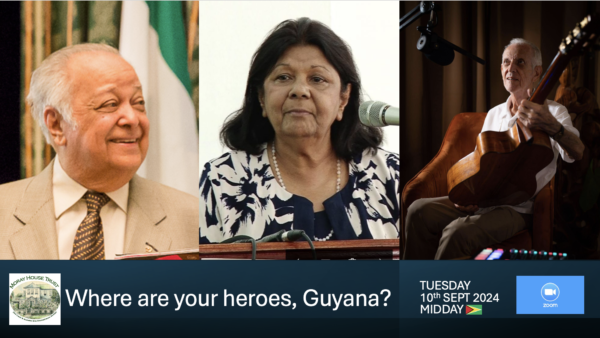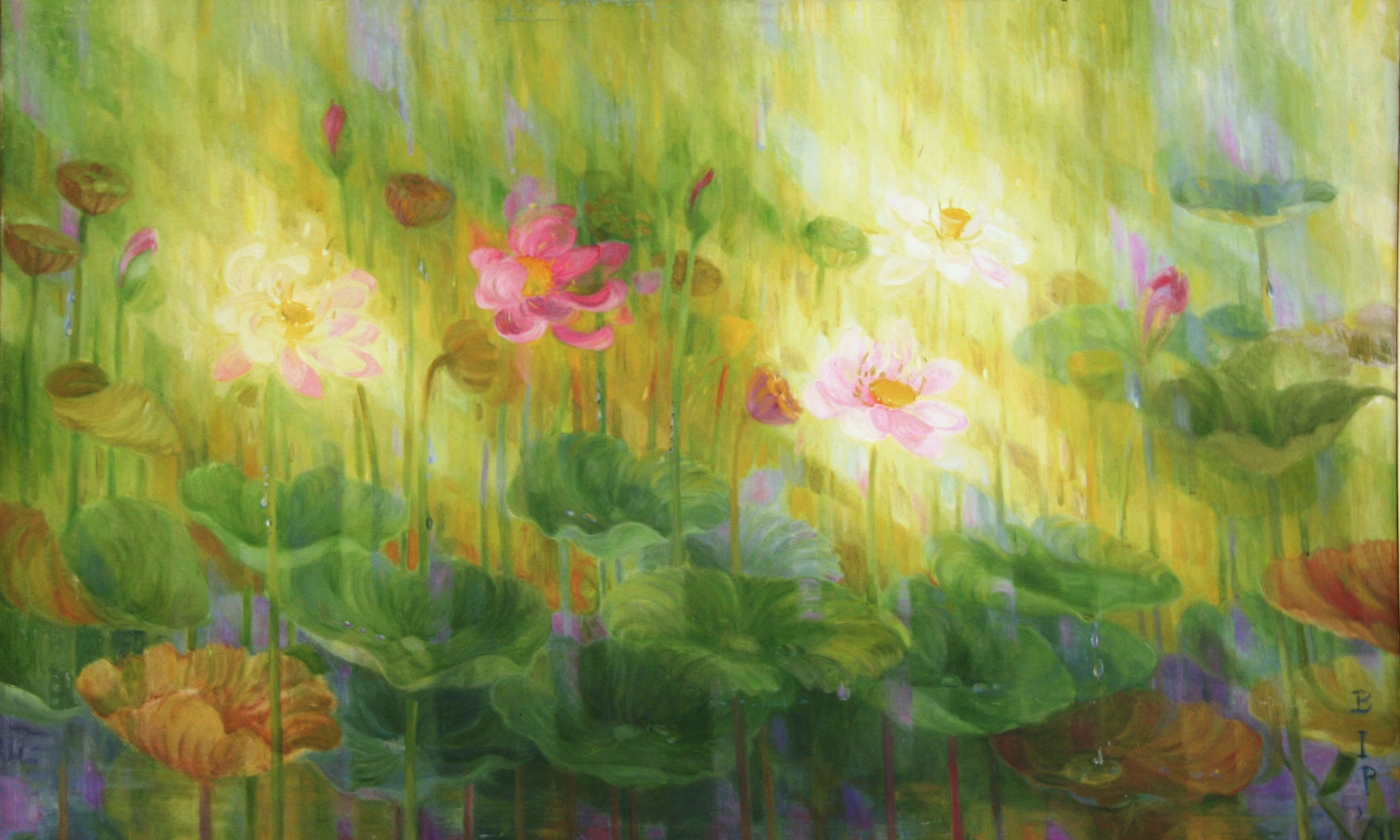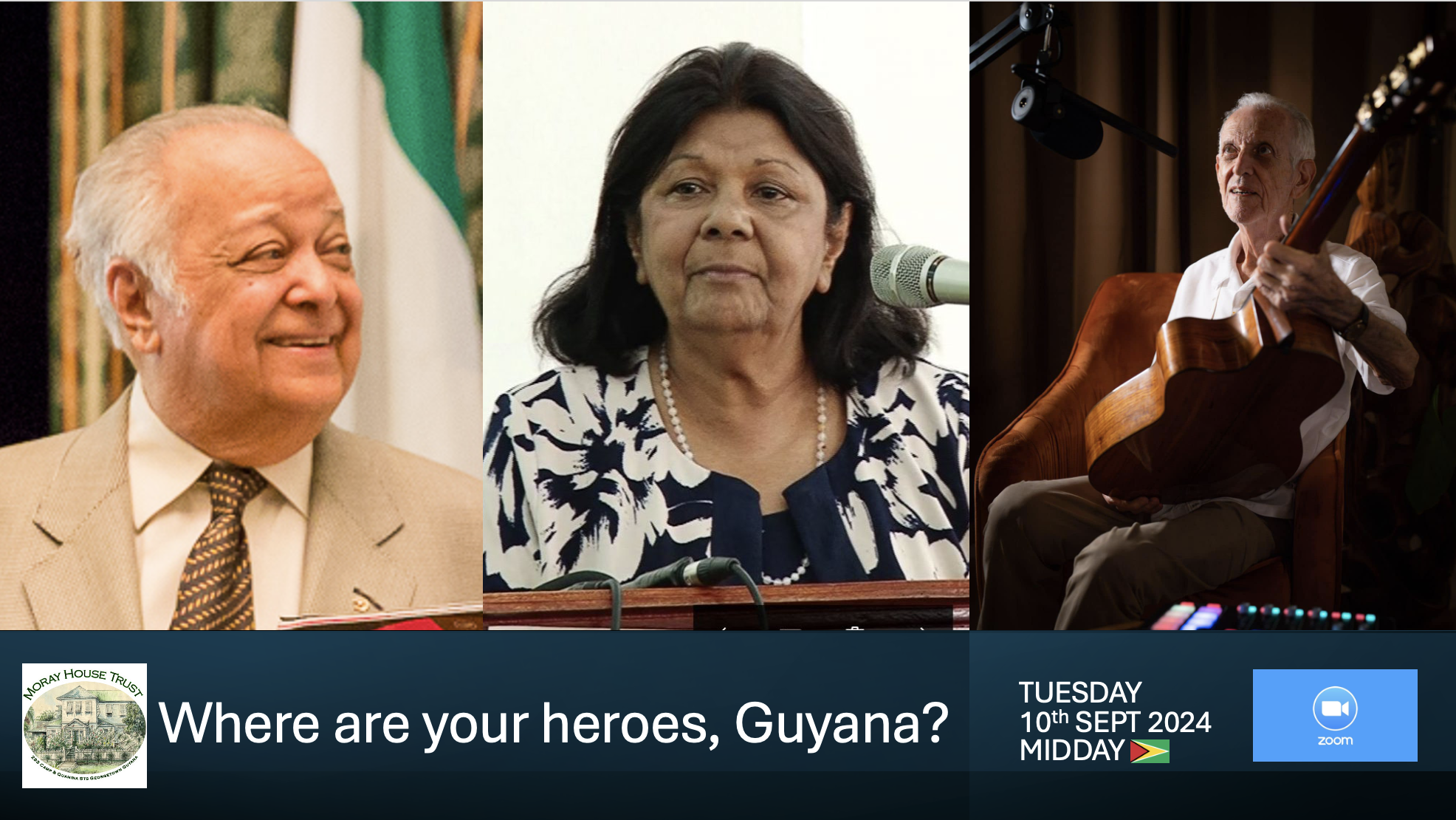Activity: Readings
Series: Samaan Tree Series
Date: 10th September 2024
Time: Midday, Guyana
YouTube: https://youtu.be/jvzsrtXHCO8

Moray House Trust hosted a session of readings and reminiscences.
In the early 1980s, Dave Martins posed a question in one of his calypsos, ‘Where are your heroes, Caribbean?’ A quarter of a century later, someone took the trouble to respond, with a book titled ‘Here are your Heroes, Caribbean’ (charting the conception of Order of the Caribbean Community, awarded to West Indians whose legacy in the region’s cultural, economic, political and/or social spheres was ‘phenomenal’). Not surprisingly, Sonny Ramphal, as he is known in Guyana, was an early recipient of the Order.
Awards and statues are important (and imported) ways of commemorating those who have contributed to our local and regional culture. Perhaps, though, in the era of the attention economy, a pause to consider what they wrote, what they sang, what institutions they inaugurated or supported is also worthwhile. What, in short, were they trying to say and to shape? Dave Martins, Ameena Gafoor and Sonny Ramphal were all proud and dedicated Guyanese and proud West Indians. Their contributions to our culture were as sustained as they were diverse.
EVENT: Where are your heroes, Guyana?
DATE: Tuesday 10th September 2024
TIME: 12.00 (MIDDAY), GUYANA
YOUTUBE: https://youtu.be/jvzsrtXHCO8
MODERATOR’S INTRO [EDITED]:
Welcome to another session in the Samaan Tree Series, titled Where are your heroes, Guyana? The title has provoked a flurry of responses. A few have questioned the designation of hero for one or other of those featured. Others have pointed out, quite fairly, that all three received some form of public or institutional recognition for their work in their lifetimes. The range of responses is instructive. So, let me first admit a mea culpa and then try to explain. The title is a riff on one of Dave Martin’s calypsos, ‘Where are your heroes, Caribbean?’ In it, as in some of his other work, Dave interrogates a little the values we share as a society and as a region. The title of today’s session was intended to reference Dave’s calypso and, by extension, this interrogation. Clearly, judging by some responses at least, it was wide of the mark.
The absence of consensus as to who should be designated a hero could be seen as indicative of our ‘disunity’ locally and regionally. Equally, it could be seen as a measure of the complexity of our culture, a culture where consensus is partial, fragile. It is beyond the scope of this event to engage with those questions. The intention today is to illustrate, in small part and using their own texts, the vision that Dave Martins, Ameena Gafoor and Sonny Ramphal had of our society and of our region, and in particular, areas of convergence in their thinking and their analysis. In other words, what were their specific and shared insights into the Guyanese psyche and our collective identity as West Indians? Of course, as with much of the work that we undertake in these sessions, these short readings will only serve as a start. Our analysis is partial and incomplete. To echo Ameena, this is a small, a very small, attempt to ‘expand the critical space.’
In a lecture he delivered almost 15 years ago, Sonny conjured a region prey to a ‘divisive geography’ and united by a shared history of slavery and colonialism. As West Indians, he noted, ‘we have always faced a basic contradiction of oneness and otherness, a basic paradox of kinship and alienation.’ Yet he believed that we could tip the balance in favour of unity and a common sense of purpose. Whether his belief survived the region’s disunited response to the electoral fraud in Venezuela is open to question.
Ameena depicts an experience common to many Guyanese – life in a range yard – and its regional equivalents. Writing about the Pomeroon, Dave shows the bonds forged by some of our river communities. Again and again in his lyrics, Dave finds the pulse of some sort of common identity – locally and regionally. What is remarkable with all three is how their gaze shifts continually between the local and the regional, picking up common patterns of experience and common responses.

